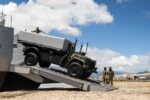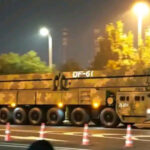Chinese private aerospace firm LandSpace has successfully conducted a vertical takeoff and landing (VTVL) test of its Zhuque-3 reusable rocket prototype. The milestone marks a significant step toward China’s ambition to develop a fully reusable heavy-lift launch system akin to SpaceX’s Falcon 9. As Beijing accelerates its commercial space sector under military-civil fusion policy directives, the Zhuque-3 program could reshape China’s access-to-orbit capabilities with direct implications for dual-use satellite deployment and strategic ISR infrastructure.
LandSpace’s Strategic Pivot to Reusability
Founded in 2015, LandSpace was among the first wave of Chinese commercial launch firms authorized under Beijing’s post-2014 reforms opening the space sector to private capital. Initially focused on solid-fueled rockets like the Zhuque-1 (which failed its maiden flight in 2018), LandSpace shifted toward liquid propulsion with its methane-powered Zhuque-2—a vehicle that achieved orbit in July 2023 after an earlier failure.
The Zhuque-3 represents a further evolution: a stainless-steel-bodied two-stage-to-orbit (TSTO) system designed for full reusability. According to official statements and imagery released by LandSpace on January 19, 2024, the company successfully conducted a VTVL test using a scaled prototype at Jiuquan Satellite Launch Center. The test vehicle reached an altitude of approximately 350 meters before performing a controlled descent and soft landing using grid fins and retropropulsion—a maneuver directly comparable to early Grasshopper tests by SpaceX over a decade ago.
This test validates key subsystems including thrust vector control (TVC), autonomous guidance algorithms, and structural integrity under dynamic loads—critical prerequisites for booster recovery operations.
Zhuque-3 Design Features and Performance Goals
The full-scale Zhuque-3 is projected to stand approximately 76 meters tall with a diameter of 4.5 meters—comparable in size to Falcon 9 Block 5. It will be powered by nine Tianque-series methalox engines on the first stage delivering roughly 900 tonnes of thrust at liftoff. The second stage will use vacuum-adapted variants for orbital insertion.
Key design attributes include:
- Methane-liquid oxygen (methalox) propulsion: Offers cleaner combustion than kerosene (RP-1), reducing coking and enabling rapid reuse cycles.
- Stainless steel airframe: Similar to SpaceX’s Starship architecture; optimized for thermal resilience during reentry.
- Grid fins + retropropulsion landing system: Enables boost-back and precision landings on sea-based or land pads.
- Payload capacity: Estimated at ~15–20 metric tons to low Earth orbit (LEO) when reused; up to ~30 tons expendable configuration.
If these specifications are realized operationally by the planned inaugural flight window in late 2025 or early 2026, Zhuque-3 would become one of only two globally fielded medium-heavy reusable orbital systems—alongside Falcon 9—and potentially ahead of Blue Origin’s New Glenn or Russia’s Amur-SPG programs.
Implications for China’s Military-Civil Fusion Doctrine
The development of reusable rockets like the Zhuque-3 aligns closely with China’s broader military-civil fusion (MCF) strategy—a national directive aimed at leveraging commercial innovation for defense modernization. While LandSpace is nominally private, it operates within an ecosystem tightly coupled with state-run entities such as CASC (China Aerospace Science and Technology Corporation) and CASIC (China Aerospace Science & Industry Corp).
A reusable medium-lift platform would enable more frequent launches at reduced cost per kilogram—facilitating rapid deployment of ISR satellites, communications constellations like Hongyun or Xingyun networks, or even responsive space capabilities akin to U.S. Tactically Responsive Launch initiatives.
This capability could also support People’s Liberation Army Strategic Support Force (PLASSF) missions involving electronic warfare payloads or dual-use Earth observation platforms under cover of civilian launches—a growing concern among Western analysts monitoring Chinese space militarization trends.
Competitive Landscape: China vs SpaceX
Zhuque-3 enters an increasingly crowded field where global players are racing toward reusability as the new norm rather than exception. While SpaceX has conducted over 250 successful Falcon 9 launches, many using reused boosters up to fifteen times each, no other nation has yet demonstrated comparable operational cadence or cost-efficiency from reusable systems.
However, several Chinese firms are now pursuing similar architectures:
- CASC’s Long March 10A: A partially reusable variant targeting crewed lunar missions post-2030s.
- i-Space Hyperbola-2: Undergoing VTVL tests similar to those just completed by LandSpace; aims for suborbital flights in late 2024.
- Galactic Energy Pallas series: Also exploring methalox-fueled reusable designs with smaller payload classes (~5 tons).
Zhuque-3 may gain first-mover advantage if it achieves orbital reusability before these competitors—giving China its first credible domestic alternative to Falcon-class services without reliance on foreign tech transfer or Russian engine imports like YF-series derivatives used in older Long March vehicles.
Toward Operational Deployment: Challenges Ahead
The successful hover test is just one step on a long path toward operational maturity. Upcoming milestones include high-altitude hop tests (>1 km), full-stage static fires under flight loads, avionics redundancy trials under fault injection scenarios, thermal protection validation during atmospheric reentry simulations—and ultimately full-stack orbital launches followed by booster recovery attempts either via sea barge or inland pad return trajectories.
Critical challenges remain:
- Tianque engine reliability: Methalox engines are notoriously complex; achieving consistent ignition across multiple reuse cycles remains unproven outside SpaceX Raptor/Falcon Merlin families.
- SAR/GNSS integration for precision landings: Accurate navigation during descent requires tight coupling between synthetic aperture radar altimetry and GNSS-denied inertial guidance—especially if operating near contested areas or jamming environments.
- MRO infrastructure readiness: Turnaround time between flights hinges on rapid inspection regimes; this demands robust ground support ecosystems not yet validated in China outside state-run facilities like Wenchang or Taiyuan.
A New Phase in China’s Commercial Launch Ambitions
If successful at scale within this decade, Zhuque-3 could serve as both technological demonstrator and economic enabler—reducing cost-per-launch while expanding China’s ability to field large satellite constellations quickly. This would have direct implications not only for civil applications like broadband coverage but also military C4ISR expansion across Asia-Pacific theaters where U.S.-China competition is intensifying both terrestrially and in orbit.
The next major milestone will likely be a high-altitude hop test slated for mid-to-late 2024 followed by integrated stage testing later that year. If timelines hold—and if performance matches projections—the global launch market may soon witness another serious contender emerge from East Asia’s rapidly evolving MilTech-industrial complex.










